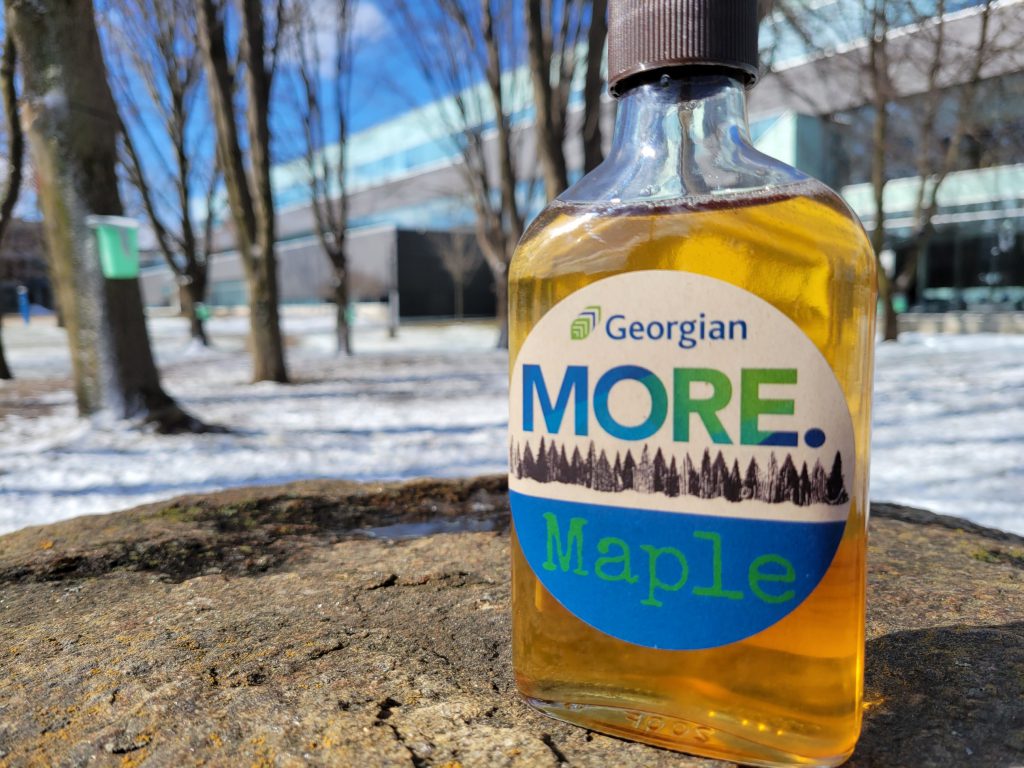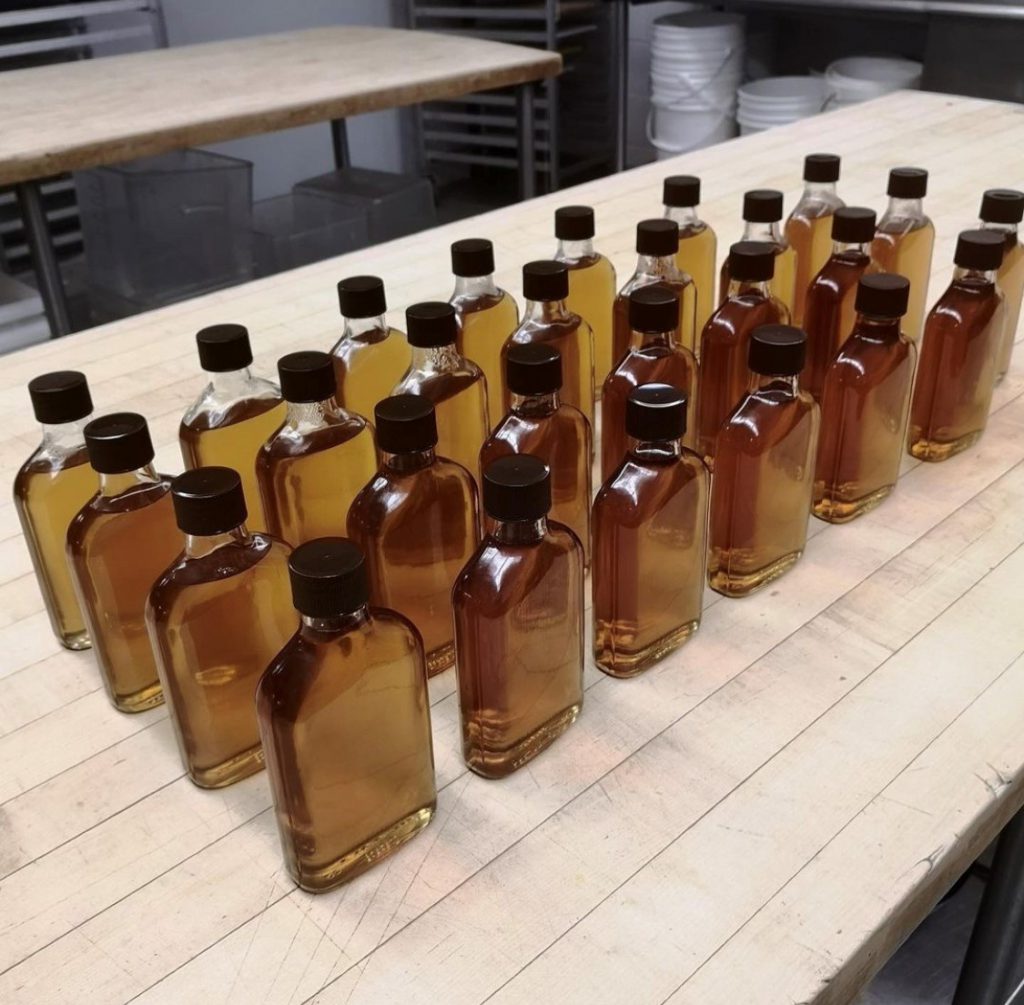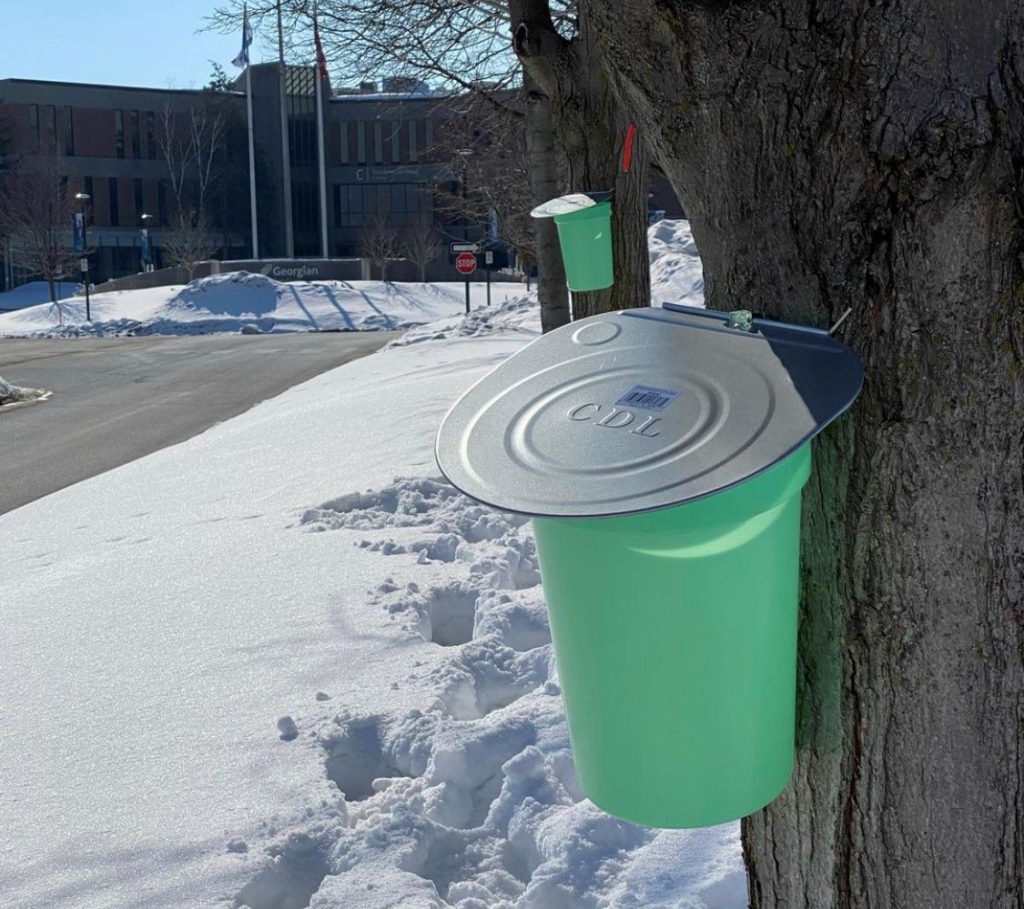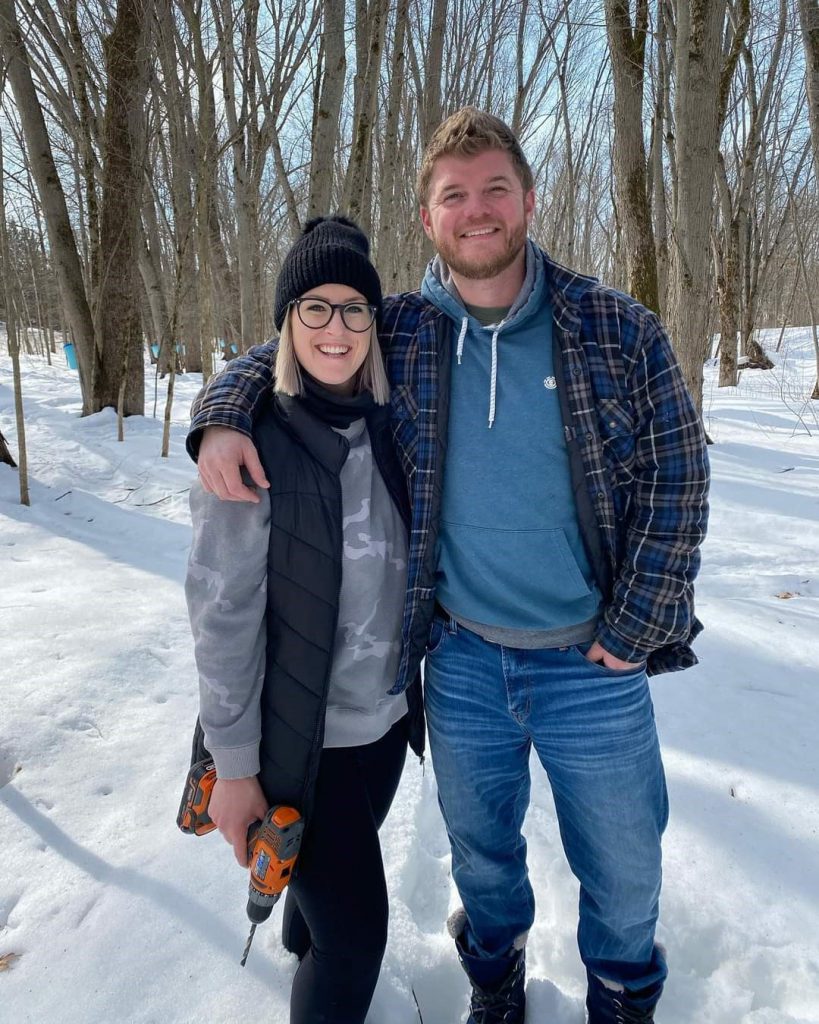Sweet! Hospitality produces maple syrup on campus
March 31, 2021
Georgian tapped into a sweet new venture at its Barrie Campus this spring, producing maple syrup from a dozen of its trees.
We spoke with Steven Hilborn, a Professor in Georgian’s Hotel and Resort Operations program, who led the maple syrup production.

Where did the idea come from?
Last year, as the pandemic hit, Georgian’s Hospitality department upgraded a lot of its edible landscape initiatives. It expanded its gardens with 50 different varieties of all kinds of vegetables.
It was wildly successful, and many students volunteered to help.
The majority of the 400 kilograms of plants grown, such as potatoes, cucumbers, tomatoes and beans, were donated to several local charities, including Georgian’s student food locker program.
Since there was a huge interest, and I’ve been producing my own maple syrup for about four years, we decided to expand our edible landscape to include maple syrup.

How much maple syrup did we get?
It was a very weird, short season. It should be about a month long, but it was only two weeks. During March, we’ve been able to get 5.6 litres of sap so far, which is a pretty small amount, especially considering how kids use maple syrup on their pancakes!
The sap-to-syrup ratio is about 40:1, and that’s on a perfect day. So, for about six litres of syrup, we collected, at minimum, 240 litres of sap.
For our pilot project, we installed 22 taps in 12 maple trees on the east side of the Sadlon Centre for Health, Wellness and Sciences (M building). We have a lot more maple trees on campus we could use in the future.
How and where was the sap boiled and bottled?
We boiled it in one of our culinary labs at the Barrie Campus – the one near the Georgian Dining Room (GDR). We were back there in the kitchen boiling sap while a class was going on in the GDR. Students kept coming by wondering what was going on and wanting to help.
For an average boiling session, I started at 8:30 a.m. and was out of there at 6:30 p.m. It’s all day, but that included everything from collecting sap from the trees, to bottling the maple syrup.
What are we going to use the maple syrup for?
Students will be using it in our culinary and baking programs. We’ll also be gifting some of it to Georgian’s Board of Governors and Indigenous Services.
Making maple syrup is hopefully the start of something a little bit bigger.
We’ve actually already had students reaching out to say they want to be part of it next year, as well as to help maintain the garden. I think students would love that outdoors, hands-in-the-dirt kind of experience.
How did you collect the maple syrup?
We collected it the old-school way: gathering up buckets from the trees by hand and dumping them into a larger container. They call it “tipping buckets.”

My shoulders have been sore for a couple weeks. I had to carry five-pound buckets from M building to the Centre for Hospitality, Tourism and Recreation (E building). You don’t think it’s very far… until you’re carrying 40 pounds on each arm.
Some companies run gravity lines with vacuums on it, which suck the sap out of the trees. If we did that, it would kind of defeat the purpose because we’re trying to go very authentic in everything we’re doing.
I did this batch, but I had help with a part of it from Bryan Hunt, Dean of Hospitality, Tourism and Recreation; Daniel Clements, Academic Program Technologist; and Julien Ross, Food and Beverage Procurement Specialist.
What’s the future of agriculture and edible landscapes at Georgian?
We want to introduce agriculture to Georgian, which doesn’t have any agriculture programs at the present time. These are baby steps trying to get there and show that it’s very possible.
It’s nice to have coniferous trees and shrubs and lily plants on campus because they need little maintenance and look nice, but it would be great to have other types of trees we can harvest.
Sustainability is a way we have to live now; it’s not a trend. We’re trying to introduce agriculture in a small but meaningful way so students can get on board and experience some of it.
Steve’s sweet tips for making maple syrup:
- Mark your trees in advance so you know which ones are maple. Once the leaves are gone in the winter it can be difficult to tell them apart.
- Wait to tap your trees until temperatures are positive in the daytime and negative at night. A 10-degree difference is best.
- Tap your trees about one metre up the trunk. Choose the side that sees the most sun because it’ll warm up the most.
- When drilling a hole in the tree trunk for your spile, make sure it’s at a bit of a downward angle. Gravity will help the sap come out a bit easier.
- Make sure to refrigerate the sap after collecting it if you’re waiting a while to boil it. Collected sap only lasts about a day or two.
- Boil the sap to 104 C (219 F).
- Consider buying a starter kit from a hardware store, and use a proper filter. Coffee filters won’t work!
- Sterilize your syrup bottles, seal properly, and store in a cool place for the maple syrup to last forever. Well, until you open it, that is. Refrigerate any opened bottles.
- Anyone can do it – have fun!
